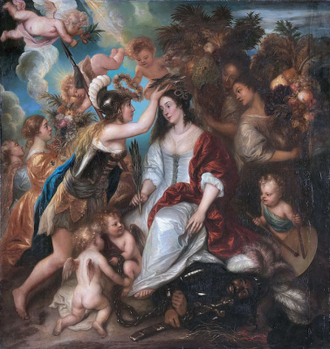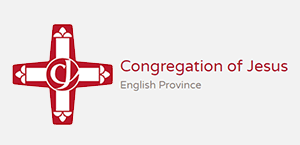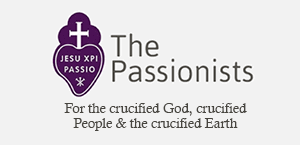Gospel in Art: Peace I leave with you; my peace I give to you

Allegory of Peace, Jan Lievens, 1652 © Rijksmuseum, Amsterdam
Source: Christian Art
Gospel of 20 May 2025
John 14:27-31a
At that time: Jesus said to his disciples, 'Peace I leave with you; my peace I give to you. Not as the world gives do I give to you. Let not your hearts be troubled, neither let them be afraid. You heard me say to you, "I am going away, and I will come to you." If you loved me, you would have rejoiced, because I am going to the Father, for the Father is greater than I. And now I have told you before it takes place, so that when it does take place you may believe. I will no longer talk much with you, for the ruler of this world is coming. He has no claim on me, but I do as the Father has commanded me, so that the world may know that I love the Father.'
Reflection on the painting
Jan Lievens' Allegory of Peace, completed in 1652 celebrates the Treaty of Münster (1648), which brought an end to the long and bitter conflict between Spain and the Netherlands. This monumental (217 x 211 cm; 85 x 83 in) canvas is packed with symbolism. At its centre sits Pax, the Roman goddess of peace, serene and dignified, holding an olive branch, the timeless symbol of reconciliation. She is crowned with a laurel wreath by Minerva, goddess of wisdom, who appears clad in armour, signifying that true peace is not simply the absence of war, but the triumph of wisdom over conflict. Beneath Pax's feet lies a defeated and chained Mars, the god of war, his sword cast aside as a clear statement that violence has been subdued.
The surrounding figures add to the celebratory tone of the painting. On one side, women carry baskets of fruit, symbols of abundance and prosperity, now possible as the war has ended. Playful putti are dancing, placing chains on Mars, and beating drums in joyful proclamation of victory. On the other side, more putti and women scatter flowers, reinforcing themes of fertility, renewal, and harmony. Lievens masterfully weaves together classical mythology and contemporary political sentiment, creating a powerful allegory that reflects the relief and hope felt across the Dutch Republic after decades of war. The painting is not merely a commemoration of a treaty, but a visual manifesto declaring that wisdom and peace must forever hold dominion over the destructive forces of war.
In today's Gospel reading Christ speaks of a very different kind of peace, a peace that transcends anything this world can offer. Peace I leave with you; my peace I give to you. A peace the world cannot give, this is my gift to you, says Jesus. The peace He promises is not merely the absence of conflict, like the earthly notion of peace depicted in the lower left of our painting, where violence has ceased. For Jesus, peace is far more than the end of hostility; it is a profound, lasting gift that touches the very core of our being. His peace is not external or temporary, dependent on changing circumstances; it is eternal and internal. It is a deep-rooted serenity that flows from being united with God.
LINKS
Gospel in Art: https://christian.art/
Today's Reflection: https://christian.art/daily-gospel-reading/john-14-27-31a-2025/ (with audio)


















